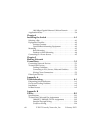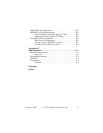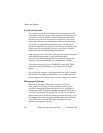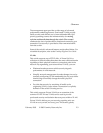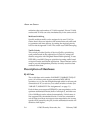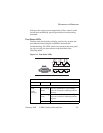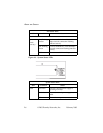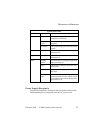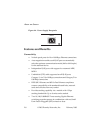
A
BOUT
THE
S
WITCH
2-4 © 2003 Foundry Networks, Inc. February 2003
minimizes the total number of VLANs required. Private VLANs
and normal VLANs can exist simultaneously in the same switch.
Multicast Switching
Specific multicast traffic can be assigned to its own VLAN to
ensure that it does not interfere with normal network traffic and
to guarantee real-time delivery by setting the required priority
level for the designated VLAN. The switch uses IGMP Snooping.
Traffic Priority
This switch provides Quality of Service (QoS) by prioritizing
each packet based on the required level of service, using four
distinct categories with Weighted Round Robin queuing. It uses
IEEE 802.1p and 802.1Q tags to prioritize incoming traffic based
on input from the end-station application. These functions can be
used to provide independent priorities for delay-sensitive data
and best-effort data.
Description of Hardware
RJ-45 Ports
The switch base unit contains 24 10BASE-T/100BASE-TX RJ-45
ports. All of these ports support automatic MDI/MDI-X
operation, so you can use straight-through cables for all network
connections to PCs or servers, or to other switches or hubs. (See
“10BASE-T/100BASE-TX Pin Assignments” on page -2.)
Each of these ports support IEEE 802.3x auto-negotiation, so the
optimum transmission mode (half or full duplex), and data rate
(10 or 100 Mbps) can be selected automatically, if this feature is
also supported by the attached device. If a device connected to
one of these ports does not support auto-negotiation, the correct
speed will be sensed by the port, but the transmission mode will
default to half duplex.



